6 simple steps to create a health and fitness masterplan
Post details
Posted on 7th October 2015
Most people have a plan for how they'd like to progress along their career path. But rarely do people take the time to plan their health...
Six Simple Steps to Become Truly Fit and Healthy
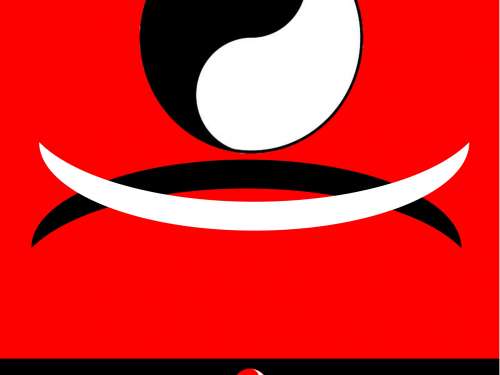
Over the last 9 months, via the Bodyguards Newsletter/blog, I have been slowly introducing the 6 simple steps and their associated concepts that can lead you along the path to being the fittest and healthiest you've ever felt and looked.
- Love
- Forces
- Choices
- Doctors
- Exercise programme design factors
- Foundational principles of health
Have you tried to follow them all ?
There's a lot to take in so chances are you've read and tried to implement some of them but not everything ? Remember, 'whole health' can only be as strong as the 'sum of all its parts' or in other words 'you're only as strong as your weakest link' so its worth reviewing your health & fitness programme from time to time and trying to fill in the gaps.
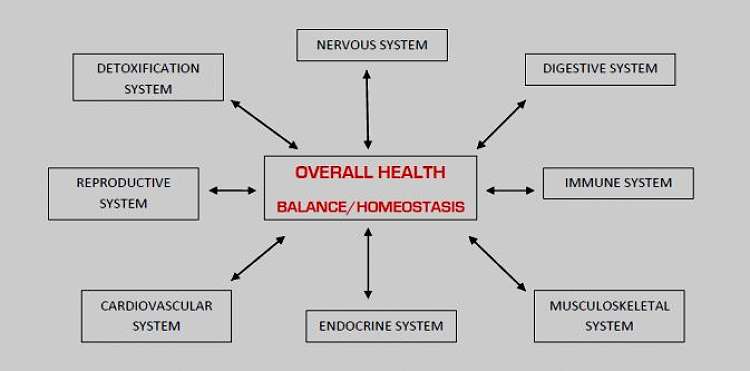
The human body is a system of systems. Being physically fit doesn't necessarily mean you're healthy, its just one part of the bigger picture, of whole health and thus why we need to look at the other elements of health, the other systems of the body to become truly fit for life, to balance your mind-body and soul and to create optimal performance. This months newsletter is intended to serve as a summary of all 6 steps and the holistic approach to health & fitness that we now offer to our clients at Bodyguards...
The CHEK Academy

These 6 steps are a summary of what I've learnt from being a part of the CHEK Academy (Corrective Holistic Exercise Kinesiology) over the last 4 years.

The CHEK Institute was founded by Paul Chek himself who is pretty much the number 1 Holistic Health Guru and education provider in the world. He is a true pioneer of holistic health and has made a real impact on the world over his 35+ year career in the Health & Fitness Industry, training many of the worlds best sportsmen along the way. The best thing about Paul Chek is that he genuinely wants to make a difference and when you meet him you realise that he has unbounded energy and drive, incredible strength, and supreme levels of health, knowledge and wisdom, even at 52 years old, and a six pack to prove it.
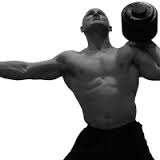
He has spent decades researching everything to do with health & fitness (physical, mental, emotional and spiritual) and has put all the work of hundreds of Health Practitioners together into a series of courses which allow people like me and the Team at Bodyguards to learn, implement into our own lives and then pass on to as many clients as we can.
1-2-3-4-5-6 Steps to Health & Fitness
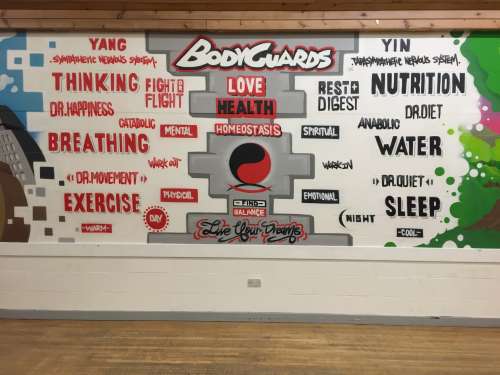
Initially it can seem overly complicated and like there's a lot to do but in reality these steps are very simple to follow and once implemented make your life a lot easier and happier. Prevention is always better than cure but often people don't find the motivation to lead a healthier lifestyle until something goes wrong i.e. back pain, ill-health or even disease. The 6 steps help you to create a masterplan or blueprint to be able to build true health and realise your potential. Lets get started...
1. Love
The first step is to identify your dream. Your one love.

Jerry Wesch said "If you have a big enough dream, you don't need a crisis". What he meant by this is that most people who don't have a dream tend to go through life bouncing from one crisis to another. Without a dream or an ultimate goal, people tend to lack direction and thus often lack the motivation or discipline required to take responsibility for their own health. This important step requires a certain amount of introspection...
What do you love to do or what would you love to be ? What makes you happy ? What would you like to be remembered for ? i.e. Whats your legacy ? You purpose in life ?
By identifiying your One Love, and by understanding that in order to realise and live your dreams you need to be healthy, full of energy and have a zest for life, you create a motivational drive that guides you toward your goals and in particular your true health potential, even when the road gets rocky. If you have a big enough dream that you feel passionate and excited about, when you stray from your path, its this dream that will get you back on track, moving in the right direction again and help to motivate you to stick to your plan.
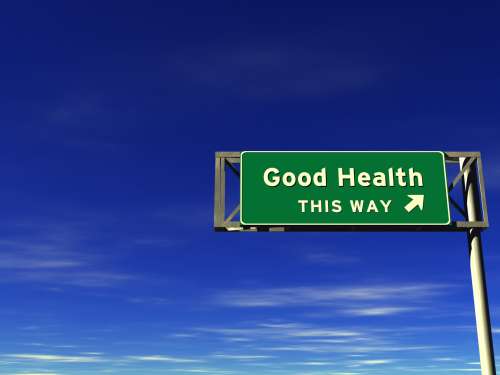
What's your dream ?
2. Forces
The next step is to find balance

According to ancient Chinese philosophers, the universe is governed by two forces;
Yin (the female force associated with dark, night, cool, nature and spirituality) and Yang (the male force associated with light, day, warm, industry and science). Neither could exist without the other and together they create life itself. In relation to the human body, interestingly the two forces correlate strongly with the two brain hemispheres and the two branches of our autonomic nervous system (ANS) which governs the sub-conscious function of our bodily functions like our heart rate, breathing rate, release of hormones and blood pressure etc.
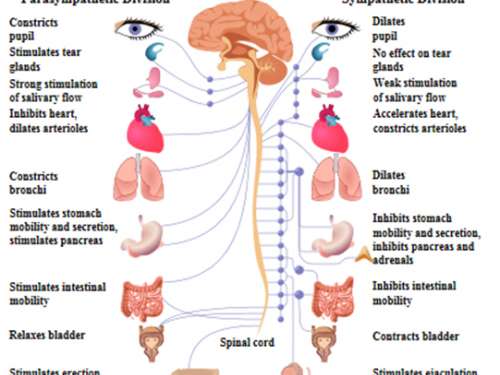
Yin
The Yin (right brain) branch of our ANS (parasymapathetic) is responsible for slowing our heart rate, breathing, blood pressure and draws energy back into the body by allowing it to digest food, re-hydrate, build muscle and repair any damage caused to its cells. The parasymapthetic branch is responsible for 'Rest & Digest' and creates an anabolic state in the body which facilitates growth.
Yang
On the other hand, the Yang (left brain) branch of the ANS (Sympathetic) is responsible for increasing our heart rate, breathing and blood pressure whilst tending to spend our energy for the purpose of survival. The Sympathetic branch is responsible for 'Fight or Flight' and creates a catabolic state in the body which facilitates activity.
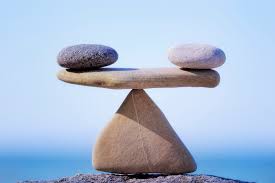
Each branch is equally important but what is significant to understand in this step is that when one side is active, the other is being suppressed and vice-versa. The balance between the two branches is what helps us create a state of homeostasis and thus robust health and so the trick to finding balance is to identify whether you tend to activate the sympathetic or the parasympathetic more in your life. With this knowledge you can begin to calculate what you need to do to re-establish your balance. Work-in (Yin) or Work-out (Yang) ?

If you're too stressed and your body is under a lot of physiological load, caused by:
- A poor diet i.e. too many processed foods or too much sugar
- A lack of the right nutrients for your body's needs e.g. good fats
- Chronic dehydration or just a lack of quality water
- Not enough sleep or too many late nights
- A lack of rest, relaxation and recovery
- Too many toxins in the body
- The wrong types of exercise for your body
- Poor posture and tight muscles
- Injuries, joint problems or spinal pathologies
- Excessive pressure or stress at work
- Too much anxiety and worry about money, health or relationships
- A poor breathing pattern i.e. too much short, shallow chest breathing
Then, like most people nowadays, you're most probably normally in a constant state of survival and overly activate the sympathetic branch of your ANS (Yang). Now, its worth pointing out that there's nothing wrong with being in 'fight or flight mode' every now and again, without our ability to adapt to survive we probably wouldn't be top of the food chain today. However, the problems occur when we spend several years in this catabolic state where we breakdown our own tissues to be able to manage the excessive load our body experiences, meanwhile we're consequently surpressing our ability to repair the damage and re-build ourselves. When this happens, we often find that we become exposed to ill-health and disease and don't have the reserves to be able to fight it. Time to work-in !
Consider our 'bank account' analogy of health

Lets assume that energy is the currency of health, and your body is your bank account. If you don't make a deposit every now and again and just keep spending all the time, you'll end up in the red. Depending on the size of your cash reserves or overdraft, sooner or later you'll find yourself getting into trouble with the bank manager, incurring hefty interest and bank fees. It's your job to stay in the black and keep your bank balance healthy !
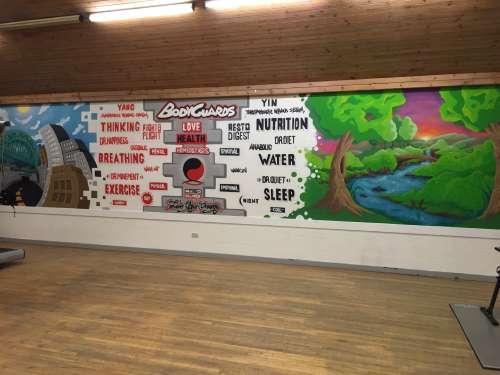
So the question is, are you too Yin or too Yang ?
At Bodyguards we encourage our clients to complete our Health Assessment Questionnaire which can highlight where you're out of balance and what needs improving
3. Choices
Choose your path wisely

Now you know where you want to be and where you are right now, you have choices to make. Having identified where you may be out of balance, this step is all about re-establishing that balance (homeostasis) by making some important decisions about how you plan to go about it. There are really only ever three kinds of choices:
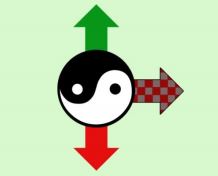
The Optimal Choice is always the best path to take because it guides you quickly and directly towards your goal and benefits you and everyone around you.
Another option is the Sub-optimal Choice which often involves, for at least part of your journey, heading in the wrong direction. We all make mistakes - generally as a result of looking for short cuts or instant gratification. However, although this path may turn out to be a longer, more arduous one, this doesn't necessarily mean that this choice is the wrong path because through our mistakes we learn about ourselves, evolve to be a better person and then make better decisions in the future. Pain is often our best teacher.
By far, the worst decision you can make is to choose Indifference, do nothing and stay exactly where you are, especially if you're already out of balance. By choosing to not take a path at all i.e. not making any changes to your diet, exercise routine or lifestyle yet still expecting changes in your health to occur is basically Einstein's definition of insanity. You always get what you've always given. More of the same = More of the same
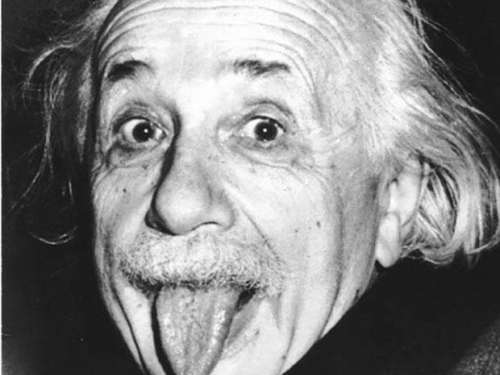
For example, if your body is out of balance and your health is suffering then if you choose to follow the 'everything in moderation' approach, chances are you won't re-establish balance (homeostasis) and simply stay as you are. Choose whats right for you at that time. Listen to your gut. Find balance. Avoid Indifference
At Bodyguards, we are here to point you in the right direction and guide you step by step along your path to health & fitness
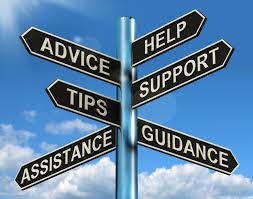
4. Doctors
Listen to your body
Around 2500 years ago, Hippocrates, the god-father of health, described the concept of the 'Three Inner Physicians' which suggested that your body was always talking to you.
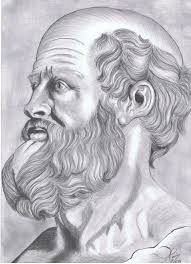
He explained that if you chose to listen to the inner physicians then they could guide you toward a strong state of health, thus negating the need to ever go to see a real doctor. The three inner physicians were named:
Dr. Quiet
Dr. Diet
Dr. Happiness
Now in the 21st century Paul Chek proposed that we add a fourth Doctor to the list;
Dr. Movement
Because 2500 years ago, when Hippocrates came up with this notion, simply washing your clothes was a harder work-out than most of us achieve in the gym nowadays !
By listening to the four doctors, identifying sub-clinical symptoms and by building a stronger relationship with yourself you can become your own private investigator of health and get to the route cause of most problems before they become systemic health issues. This is how you create a response-ability for your health i.e. The ability to respond to what your body is trying to tell you.

In turn, this allows us to avoid taking synthetic drugs, replacement hormones or undergoing nip-n-tuck surgery which often just treats the symptoms, masking the real cause of the problem and often brings all sorts of unwanted side effects and additional stresses with them - Its all just a matter of listening closely to what your body is trying to tell you.

Dr Quiet is there to tell you when you need more sleep, rest and relaxation (more Yin). He tells you when your body needs time to recover, repair itself and when you need to slow down. Work hard - rest hard. He usually alerts you to this by giving you signs in the form of tiredness, yawning, brain fog, incapacity to focus, headaches, stress, cramps, slow recovery from injury and a diminished sex drive.

Dr. Diet also encourages you to get more Yin - but in the form of good nutrition and quality water. He tells you when you need to bring more energy and resources into your body but also alerts you when you've put too much of the wrong sorts of stuff in there. Dr Diet gives you the information to put the right types and the right amounts of food for your own personal needs into your system. Generally he communicates through our metabolism and gives you signs such as obesity, acid reflux, food intolerances, headaches or sleepiness after eating, poor skin condition, frequent colds, fatigue, irregular bowel movements and bloating.
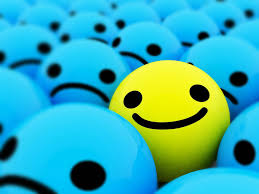
Dr. Happiness is there to lead us to a life of fulfillment and to realise your potential. He lets you know what makes you truly happy but also points out when we're not living in alignment with our own personal beliefs or core values and essentially wasting your energy. Remember, happiness is essential to true health. Dr. Happiness will alert you if your lifestyle choices are interfering with your emotional and spiritual well-being through the hormonal system in the form of mood swings, anger, fear, anxiety, social withdrawal, depression, addiction and even impotence.

The latest addition to the panel, Dr. Movement, lets you know when you need to get up, move around and do more activity. We're not exactly hunter-gatherers anymore and spend far too much time sat, hunched over laptops, phones and tablets nowadays. He shows you whether or not you're using your energy correctly and moving food through your digestive tract, blood through your veins/muscles and air through your lungs by giving you signs like slow metabolism, poor digestion, chronic muscle tension or joint pain, lack of flexibility, poor posture, constipation, poor body shape and/or tone and also by making you feel sluggish, tired and apathetic.
On training days, just prior to your session, listen to your four doctors and try to assess how much and what sort of physiological load you're currently under. Are you out of balance ? Too Yang ? Or too Yin ? Would a working-in session be more beneficial than a work out ? What should you eat and drink ? Do you need more rest ?
Your body knows - Just listen to it...
5. Exercise programme design factors
The fifth step to our masterplan is to identify what we have and what we can give. This step is a lot simpler than most of the others. It basically requires you to consider what limitations or blockers exist in the 5 main areas that influence the design of your exercise programme. They are:
Time
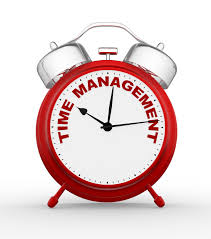
Realistically, how much time per week can you dedicate toward your fitness programme ? When do you intend to fit your training into the day ? How frequently can you train each week ? How much time will you have to do each individual session ?
Energy

Taking your current level of health and vitality into account, how much energy do you have readily available to follow an exercise routine on a regular basis ? Would it be more appropriate to work-in or workout ? Be honest with yourself - if you currently have poor health and consequently minimal energy then this could influence what type of exercise is most appropriate for you at this stage. If an exercise programme is too complicated, too long or just too demanding then generally people tend not to complete each session, if they start at all.
Willingness
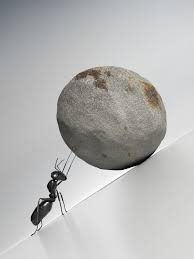
How willing are you to dedicate sufficient time, energy and money into exercising correctly and appropriately for your needs ?
This links very closely with your 'dream'. If your dream isn't big or powerful enough, if it doesn't get you excited or create an inner drive then it could be that your dream just isn't big enough to motivate you to take what could be a long path ? Establish your core values and then assess whether they provide you with the passion, discipline and determination to get stuck into your fitness schedule.
Finances

Have you sufficient funds to be able to afford personal training or gym membership ? How much will it cost ?
Equipment
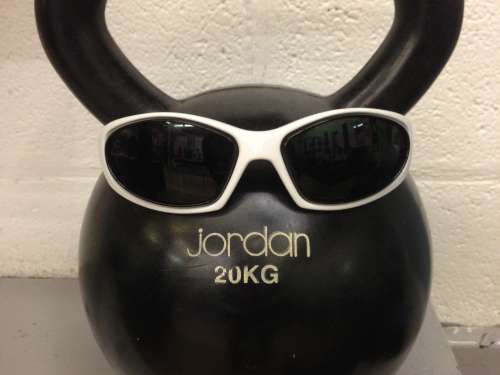
Depending on whether you intend to train in a gym, at a personal training facility or at your own home there is likely to be a requirement for at least one or two pieces of equipment in order for you to exercise appropriately. Presuming your gym has a wide selection of equipment and therefore caters for your needs whilst there, is there any other equipment that you require in order to do any parts of your programme which requires you to exercise at home ? What equipment do you already possess ?
6. Foundational principles of health
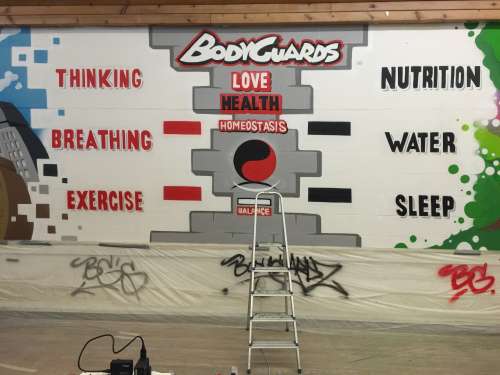
This is what the balancing act that is 'good health' all boils down to.
By improving all six of the foundational principles you can improve your health, remove the niggling aches and pains, avoid illness, expensive visits to the doctor and consequential prescription of medical drugs. You will have limitless energy, a robust immune system, strong muscles, bones and fully functioning organs. You'll develop a positive outlook and a lust for life, be emotionally stable and have a sharp mind. By building your health on these solid foundations you'll look good, feel good and be able to live your dream....
The six foundational principles of health can be split into two categories:
Yin
- Hydration
- Nutrition
- Sleep
Yang
- Thinking
- Breathing
- Movement/exercise
An excess in any of the foundational principles would indicate an excess of the category it belongs to. So too much thinking, particularly negative thinking (i.e. depressed mood) may indicate a Yang dominance whereas too much sleep would indicate a Yin dominance and so on.
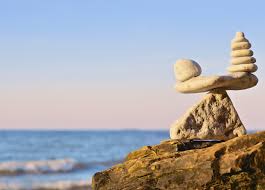
As mentioned earlier, someone who is predominantly Yang dominant tends to exhibit an excess of the Yang principles and a lack of the Yin principles.
In other words, being Yang dominant usually means you think, worry and stress too much, breathe incorrectly, too quickly or take more breaths than average, and carry too much tension in your muscles due to overtraining, poor posture or a physical, labour-intense occupation. It also likely means that you are dehydrated or at least the quality of the water you drink is poor, you are undernourished and you aren't getting enough sleep.
Health - It's all about the balance
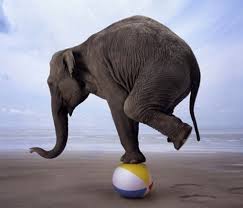
At Bodyguards, we are dedicated to helping you find a balance in your life and realise your true health potential.
We want you to 'live your dreams' and experience physical, mental, emotional and even spiritual well-being.
We'll guide you, step by step toward optimal health, homeostasis and peak performance.
We'll show you how to build robust health and vitality, brick by brick, by coaching you about:
- How to exercise and move well
- How to eat right
- How to stay hydrated
- How to rest and recover
- How to breathe properly
- How to think and be happy
Help us to help more people by forwarding this blog on to anyone who you feel may benefit from this information.
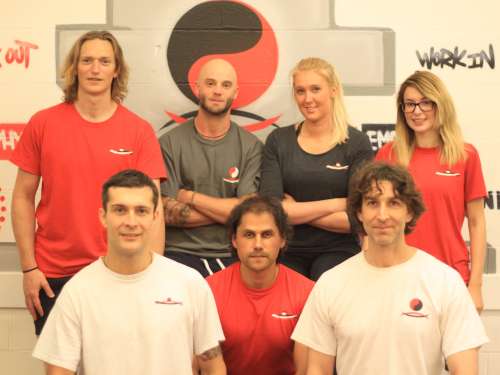
All of us here at Bodyguards are there to help so if you'd like to discuss how you can further improve your health & fitness, just ask.... Contact Us
Bodyguards Fitness Service Ltd
The Bodyguards Ethos

"To provide our clients with the best possible, balanced approach to health and fitness via personalised nutrition, functional exercise, realistic lifestyle advice and stress management."
If you heal yourself then you can start to help those around you and then potentially heal the world !
Back to blog listingBook your session now
Call us or send us a message to book a session at BodyGuards.
Book nowMore blog posts
-
Single Leg Glute Bridge
Posted on 4th October 2020
Benefits of the single leg glute bridge
-
Plank Plate Presses
Posted on 2nd October 2020
Combine core activation and shoulder stabilisation in one movement
-
Elevated Heels for the Romanian Deadlift
Posted on 30th September 2020
Elevating your heels will alter the emphasis on key muscles when performing this exercise
